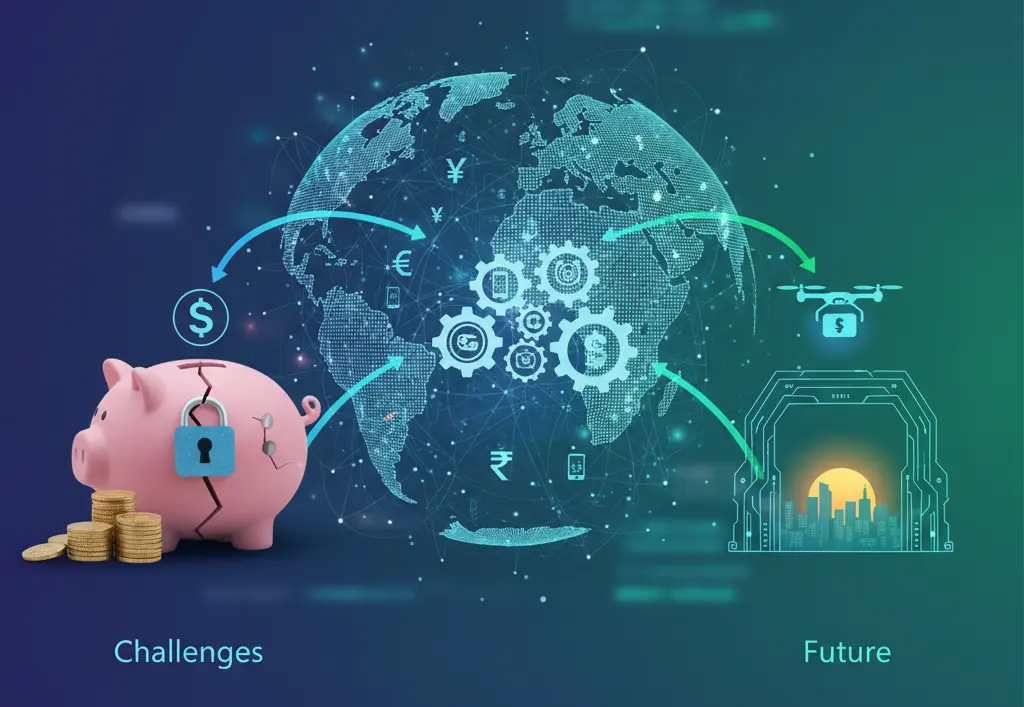
In today’s rapidly evolving financial landscape, digital wallets have emerged as one of the most transformative innovations in global payments. From streamlining everyday transactions to enabling financial inclusion in underbanked regions, these tools are reshaping how individuals and businesses move money.
In less than two years, over half the world’s population is expected to use a digital wallet. In 2024 alone, digital wallets accounted for nearly 50% of global e-commerce purchases and 30% of in-store transactions — representing approximately $14 trillion in transaction value (Statista, 2024). This figure is projected to reach $25 trillion by 2027, reflecting a profound shift toward cashless economies.
The rise of digital wallets marks a defining phase in global payments — where convenience, connectivity, and technology converge to redefine value exchange. Let’s explore what digital wallets are, how they work, the technology driving them, and their future trajectory in the global financial ecosystem.
A digital wallet, sometimes called an e-wallet, is an electronic application that allows users to store funds, make payments, and manage transactions digitally. Unlike physical wallets that hold cash or cards, digital wallets store payment credentials securely on a smartphone or other connected device.
They can link to bank accounts, credit/debit cards, or even store prepaid balances that users can spend directly. The goal is simple: to eliminate friction in transactions by offering fast, contactless, and secure payments across digital and physical channels.
Digital wallets come in several forms:
The evolution of digital wallets can be traced back to two major developments:
In advanced economies, digital wallets such as Apple Pay, Google Pay, and PayPal emerged as extensions of traditional bank accounts and card systems, offering faster, contactless payments. These were “pass-through” systems — they didn’t store funds but acted as digital interfaces for existing financial instruments.
In contrast, in developing economies, mobile network operators (MNOs) pioneered wallets to serve populations without access to bank accounts. Platforms like M-Pesa in Kenya and bKash in Bangladesh allowed users to store and transfer money using mobile numbers instead of bank accounts. This model, often called mobile money, played a crucial role in advancing financial inclusion.
According to the GSMA Mobile Money Report (2024), there are now more than 1.5 billion registered mobile money accounts globally, processing over $1.2 trillion annually. This growth has been instrumental in bridging the financial gap for millions worldwide.
At the heart of every digital wallet lies an ecosystem of technologies that ensure speed, security, and interoperability.
Every digital wallet transaction involves four essential stages:
This frictionless flow, coupled with 24/7 connectivity, makes digital wallets particularly appealing in a fast-moving digital economy.
The digital wallet revolution is global, but adoption patterns differ across regions:
According to Juniper Research (2024), more than 5.5 billion people are expected to use digital wallets by 2026 — accounting for nearly 60% of the global population.
Digital wallets are not just consumer tools — they’re reshaping how businesses handle transactions, payroll, and customer engagement.
For small and medium enterprises (SMEs), wallets offer lower transaction fees compared to traditional banking. They also facilitate cross-border transactions in real time, bypassing conventional banking delays.
From an economic perspective, digital wallets drive financial inclusion, cashless efficiency, and digital literacy. The World Bank’s Global Findex Report (2023) highlights that in emerging economies, 40% of new banked adults were onboarded via digital wallets or mobile accounts.
Furthermore, the shift toward digital payments supports governments’ efforts to curb shadow economies and enhance tax transparency, creating more accountable financial ecosystems.
Despite rapid growth, digital wallets face several challenges that could affect long-term scalability:
Addressing these challenges requires coordinated effort among regulators, fintech companies, and international organizations.
Interoperability — the ability of different financial systems to communicate and transact seamlessly — is the next major milestone for digital wallets.
National payment frameworks like India’s UPI, Singapore’s PayNow, and Nigeria’s NIBSS Instant Payments have already demonstrated how open payment systems can boost efficiency.
Globally, initiatives by the Bank for International Settlements (BIS) and the G20 Roadmap for Enhancing Cross-Border Payments are promoting greater integration between national payment infrastructures. These efforts will streamline remittances and trade payments, ensuring wallets can operate across borders as easily as domestic transactions.
The next generation of wallets is evolving from simple payment tools to full-fledged financial ecosystems. Here’s what the future likely holds:
In essence, digital wallets are poised to become gateways to the digital economy — fostering inclusion, innovation, and growth at unprecedented levels.
Digital wallets are redefining the global payments landscape. Their growth is fueled by innovation, inclusion, and a shift toward digital-first financial ecosystems. As technology advances and regulatory collaboration deepens, wallets will continue to blur the boundaries between finance, commerce, and connectivity.
From enabling microtransactions in rural Africa to facilitating seamless global commerce, digital wallets have evolved from convenience tools into catalysts of financial transformation. The world’s next financial era — faster, inclusive, and borderless — will likely revolve around them.
Want to see how a ready-made platform can accelerate your growth?
Book a demo or consult with us at RemitSo today to see how our platform can power your growth.
A digital wallet is an app that stores payment information securely and enables users to make electronic transactions without cash or physical cards.
While both allow online transactions, digital wallets can function independently of bank accounts and often support peer-to-peer transfers.
Yes. Most wallets use encryption, tokenization, and biometric authentication to safeguard transactions.
Some wallets offer offline payment capabilities using stored tokens, though full functionality typically requires internet connectivity.
Businesses benefit from faster payments, reduced cash handling, and enhanced customer loyalty programs.
China, India, and Kenya are global leaders due to strong mobile penetration and supportive fintech ecosystems.
Governments and central banks are promoting open standards like QR interoperability and real-time payment networks.
Expect integrated financial ecosystems powered by AI, CBDCs, and real-time global payments within the next decade.

